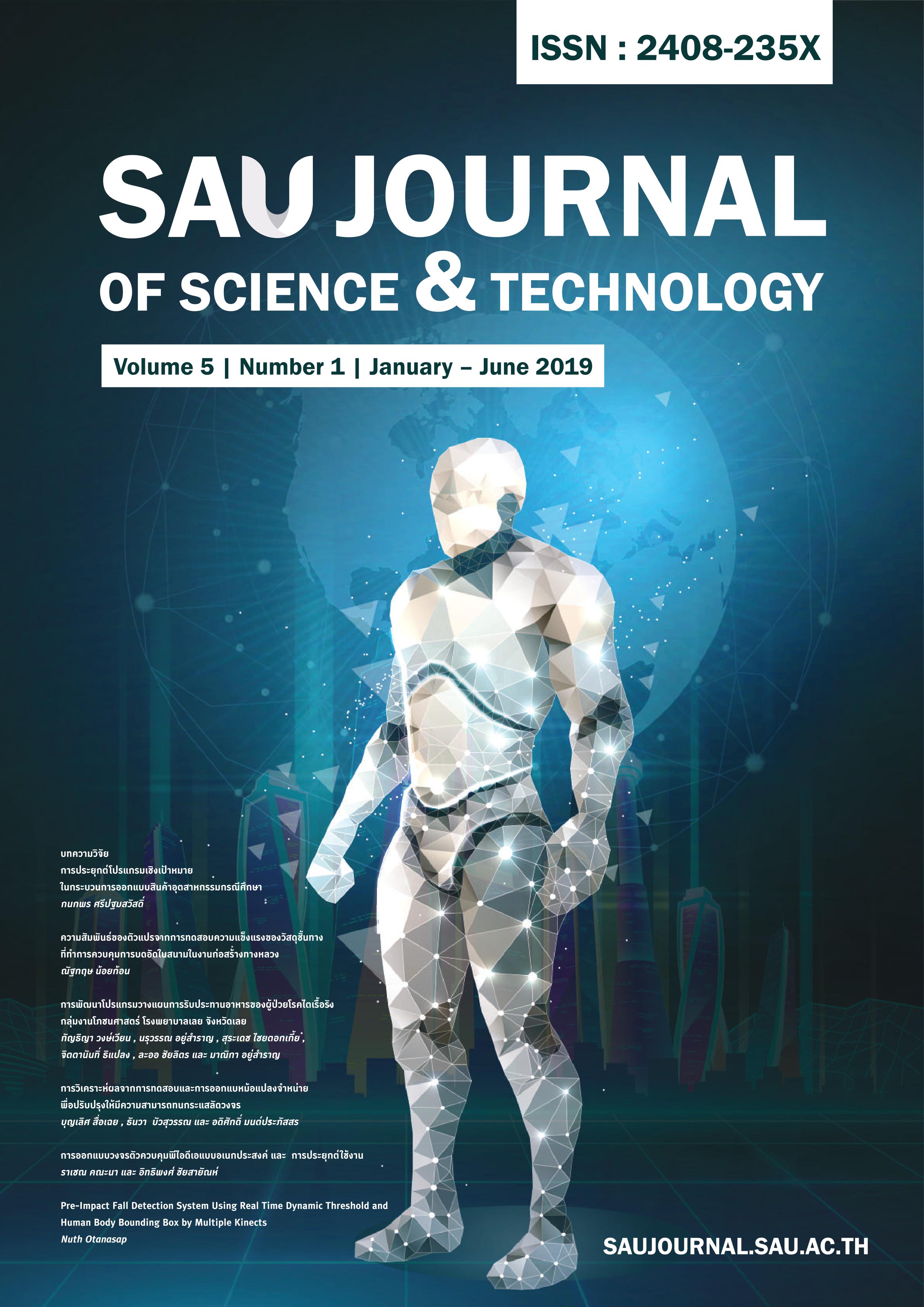Application of Goal Programming on Engineering Design Process: A Case Study
Main Article Content
Abstract
โปรแกรมเชิงเป้าหมายเป็นเครื่องมือช่วยตัดสินใจเลือกคุณลักษณะสำคัญของสินค้าอุตสาหกรรมในกระบวนการออกแบบสินค้าที่ลูกค้าเป็นโรงงานอุตสาหกรรม บทความนี้นำเสนอกรณีศึกษาการออกแบบ ถังแรงดันและใบกวน ที่จะนำไปใช้ในการผลิตซุปไก่สกัด ซึ่งมีคุณลักษณะเชิงปริมาณทางเทคนิคที่ยากต่อการตัดสินใจเลือกออกแบบให้ตรงกับจุดประสงค์ที่มีความขัดแย้งกัน ได้แก่ ชนิดของถังแรงดัน ราคา คุณลักษณะในการรับและการนำความร้อน คุณลักษณะในการรับแรงดันไอน้ำ คุณลักษณะการไหลของของเหลว อัตราการไหล และขนาดบรรจุ เป็นต้น ผลลัพธ์ของการประยุกต์ใช้การโปรแกรมเชิงเป้าหมายนี้ ช่วยให้ผู้ตัดสินใจเลือกแนวทางที่น่าพอใจที่สุด แก้ปัญหาความลำเอียงในการตัดสินใจ หรืออีกนัยหนึ่งเป็นการตัดสินใจเลือกที่เบี่ยงเบนจากเป้าหมายรวมน้อยที่สุด นอกจากนี้ผลลัพธ์ของการเลือกดังกล่าวยังช่วยในการสื่อสารระหว่างผู้ออกแบบ ผู้ผลิต และลูกค้าอุตสาหกรรม ให้เข้าใจในจุดมุ่งหมายเดียวกันง่ายขึ้น
Article Details
References
[2] P. Neammanee, “Resource Allocation Models”, National Institute of Development Administration (NIDA), Bangkok, Thailand, 2008 (In Thai).
[3] R.T. Marler and J.S. Arora, “Survey of multi-objective optimization methods for engineering”, Structural and Multidisciplinary Optimization, Volume 26, Issue 6, pp 369–395, April 2004.
[4] N. Koohathongsumrit, “Selecting Optimal Distribution Route by Zero-one Goal Programming Model”, Phranakhon Rajabhat Research Journal (Science and Technology) Vol.12(2), pp.78-91, 2017 (In Thai).
[5] Y. Pleumpirom and S. Amornsawadwatana, “Multiobjective Optimization of Aircraft Maintenance in Thailand Using Goal Programming: A Decision-Support Model”, Advances in Decision Sciences, Vol.2012, Article ID 128346, 17 pages, doi:10.1155/2012/128346.
[6] A. R. da Silva, F. R. de Almeida, and P. R. Pinheiro, “Applying a Goal Programming Model to Support the Selection of Artifacts in a Testing Process”, Advances in Software Engineering, Vol.2012, Article ID 765635, 10 pages, doi:10.1155/2012/765635.
[7] M. Meenabun and K. Asawarungsaengkul, “Competency based job rotation by using fuzzy weighted goal programming”, Proceedings of 51st Kasetsart University Annual Conference: Architecture and Engineering, Bangkok, 2013 (In Thai).
[8] E.B. Kenneth and E.T. Bartlett, “Resource Allocation through Goal Programming”. Journal of range management, Volume 28(6), pp 442-447, 1975.
[9] E. Dan Dan and O. Desmond, “Goal Programming -An Application to Budgetary Allocation of an institution of higher learning”, Research Journal in Engineering and Applied Sciences, Volume 2(2), pp.95-105, 2013.


